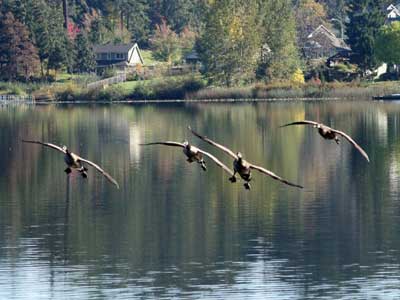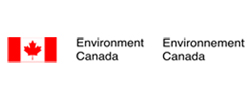Migratory Waterfowl Stewardship Project
About Waterfowl and Wetlands
Wetlands are unique areas where the aquatic or marine environment meets with the terrestrial world, and this creates a high level of biodiversity.
shallow open water
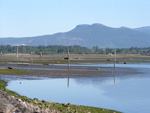 Shallow open water includes areas such as intertidal zones, estuaries and lakes that are covered in water year-round.
Shallow open water includes areas such as intertidal zones, estuaries and lakes that are covered in water year-round.
Local Examples: Cowichan Bay, Mill Bay, Cherry Point.
marsh
Marshes usually have standing or slow moving water, and dense vegetation including reeds and cattails. They are the most productive and nutrient-rich of all wetland types and provide habitat for many waterfowl species.
Local examples: Somenos Marsh
bog
Bogs are peat-covered wetlands. The water table is usually high and nutrient levels low. The main vegetation is heath shrubs and sphagnum moss.
fen
Fens are similar to bogs but some drainage occurs, which provides more nutrients. The vegetation includes sedges, shrubs and sometimes trees.
swamp
Swamps are wetlands where standing or gently moving water occurs seasonally or persists for long periods. Vegetation may include dense forests. Swamps are often threatened by drainage for agricultural purposes or other developments.
agricultural lands
Farmlands are important not only to humans as a source of food and income, but provide large areas of productive habitat for many wildlife species. Keeping a high level of biodiversity can improve nutrient cycling, reduce invasive species or pest outbreaks, and generally increase the stability of the ecosystem.
Migratory Birds
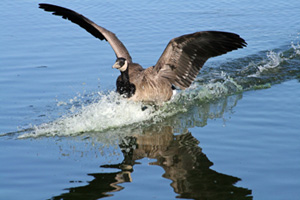 Many bird species spend different parts of the year in different areas, due to the climate and food availability. These areas are often in separate countries. The Yukon Waterfowl Technical Committee (1996) emphasized that “migratory birds belong to no state, province, territory or nation, but are a shared resource for which responsibilities for conservation and management must also be shared.”
Many bird species spend different parts of the year in different areas, due to the climate and food availability. These areas are often in separate countries. The Yukon Waterfowl Technical Committee (1996) emphasized that “migratory birds belong to no state, province, territory or nation, but are a shared resource for which responsibilities for conservation and management must also be shared.”
The Pacific Flyway is a common migratory route which extends from Northern Canada southward all the way to Central America along the west coast. Southeastern Vancouver Island is mainly an overwintering site for migratory waterfowl, although some areas provide nesting or breeding spots for certain species. Resident species include swans, mallard ducks, canada geese, and teal.
The process of migration is extremely demanding. In order to prepare for it, birds engage in “hyperphagia” or overeating in their breeding territories. This storage of fat provides energy for the flight. The amount of energy stored can determine the success of migration. Therefore, the main reason for the choice in a stopover or overwintering area is usually the availability of food.
Regional wetlands and farmlands provide nutrients and resting spots for waterfowl along this journey. They also provide habitat for overwintering or resident birds.
Common species in the Cowichan Valley include:
- Dabbling Ducks (L to R): top- northern shovelers (male & female), American wigeon (male & female), bottom- northern pintails, green-winged teal, mallards
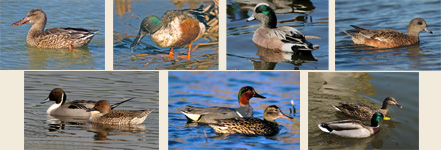
- Diving Ducks (L to R): top- common mergansers (male & female), bufflehead (male & female), middle- surf scoters (male & female), scaup (male & female), bottom- white-winged scoters (male & female), common goldeneye (male & female)
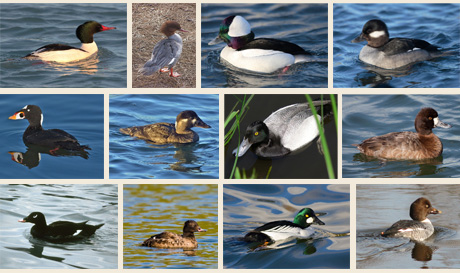
- grebes, American coot, gulls, herons, loons, cormorants
The Need for Conservation
development and population increases
As the Cowichan Valley grows in population, demands for living space also increase. With more and more development near wetlands, coastlines and riparian areas, waterfowl habitat is becoming threatened.
land use changes
Agricultural lands are one of the most important types of waterfowl habitat. As farms are converted into other uses, this habitat is lost. Conserving farmland is important to both humans and waterfowl.
Birds can also cause extensive damage to crops, which creates difficulties in trying to have farms as both productive areas and waterfowl habitat.
 pollution
pollution
Fertilizers, pesticides, herbicides, and other wastes are all sources of pollution in streams, rivers, lakes and oceans. Eutrophication (nutrient overload) has occurred in some areas such as Quamichan Lake.
 invasive species
invasive species
When exotic species are introduced into an area, they can out compete local species that wildlife depends on for food and shelter. Wetlands in particular are threatened by invasive plants such as purple loosestrife and yellow-flag iris.
 changing waterfowl populations
changing waterfowl populations
As some species (such as trumpeter swans and canada geese) increase in population size, they can cause extensive damage to crops. Farmers need to be compensated for this damage or helped to find ways to have both a productive farm and wildlife habitat.[/sm_column_text]
Resources
[/sm_column_text][sm_column_text]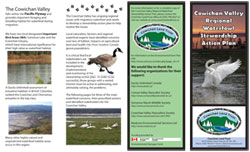
Click Here to download a brochure about the Cowichan Valley Regional Waterfowl Stewardship Action Plan

